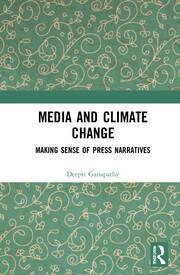
By Deepti Ganapathy
This book looks at the media’s coverage of Climate Change and investigates its role in representing the complex realities of climate uncertainties and its effects on communities and the environment.
This book explores the socioeconomic and cultural understanding of climate issues and the influence of environment communication via the news and the public response to it. It also examines the position of the media as a facilitator between scientists, policy makers and the public. Drawing extensively from case studies, personal interviews, comparative analysis of international climate coverage and a close reading of newspaper reports and archives, the author studies the pattern and frequency of climate coverage in the Indian media and their outcomes. With a special focus on the Western Ghats, the book discusses the political rhetoric, policy parameters and events that trigger a debate about development over biodiversity crisis and environmental risks in India.
This book will be of great interest to scholars and researchers of environmental studies, especially Climate Change, media studies, public policy and South Asian studies, as well as conscientious citizens who deeply care for the environment.
Contents
List of Figures.
Preface.
Acknowledgements.
1. Why report Climate Change?
2. Is the media shying away from covering climate change issues?
3. Comparative analysis of two Indian broadsheets
4. Mediatization of Press narratives
5. Climate Change Communication
6. Creating community-driven reports on Climate Change
7. Reimagining the narrative of Climate Change.
References.
Appendix.
Index.
Deepti Ganapathy is a faculty member at the Indian Institute of Management Bangalore, and a member of IAMCR.
The above text is from the publisher’s description of the book:
Title: Media and Climate Change: Making Sense of Press Narratives
Author: Deepti Ganapathy
Published: 2021
Pages: 130
Publisher: Routledge India